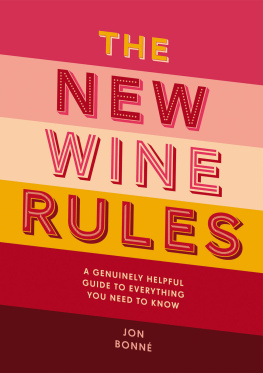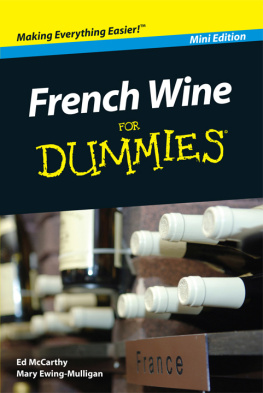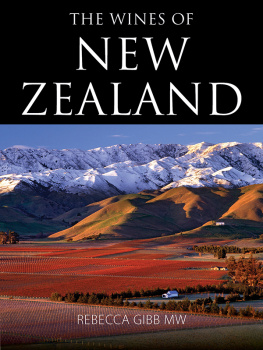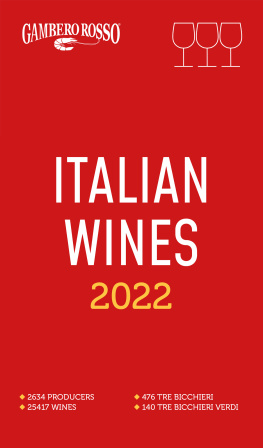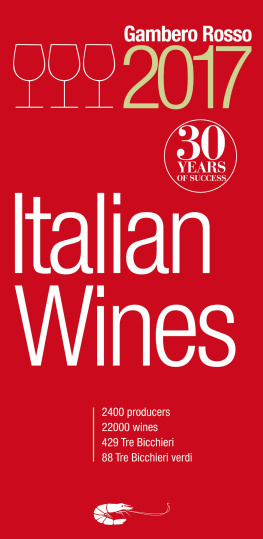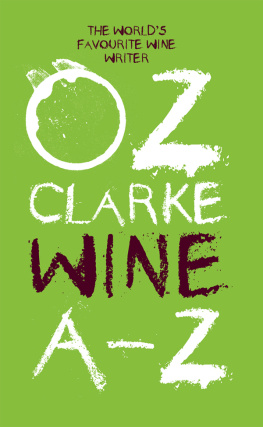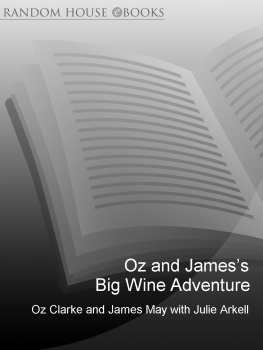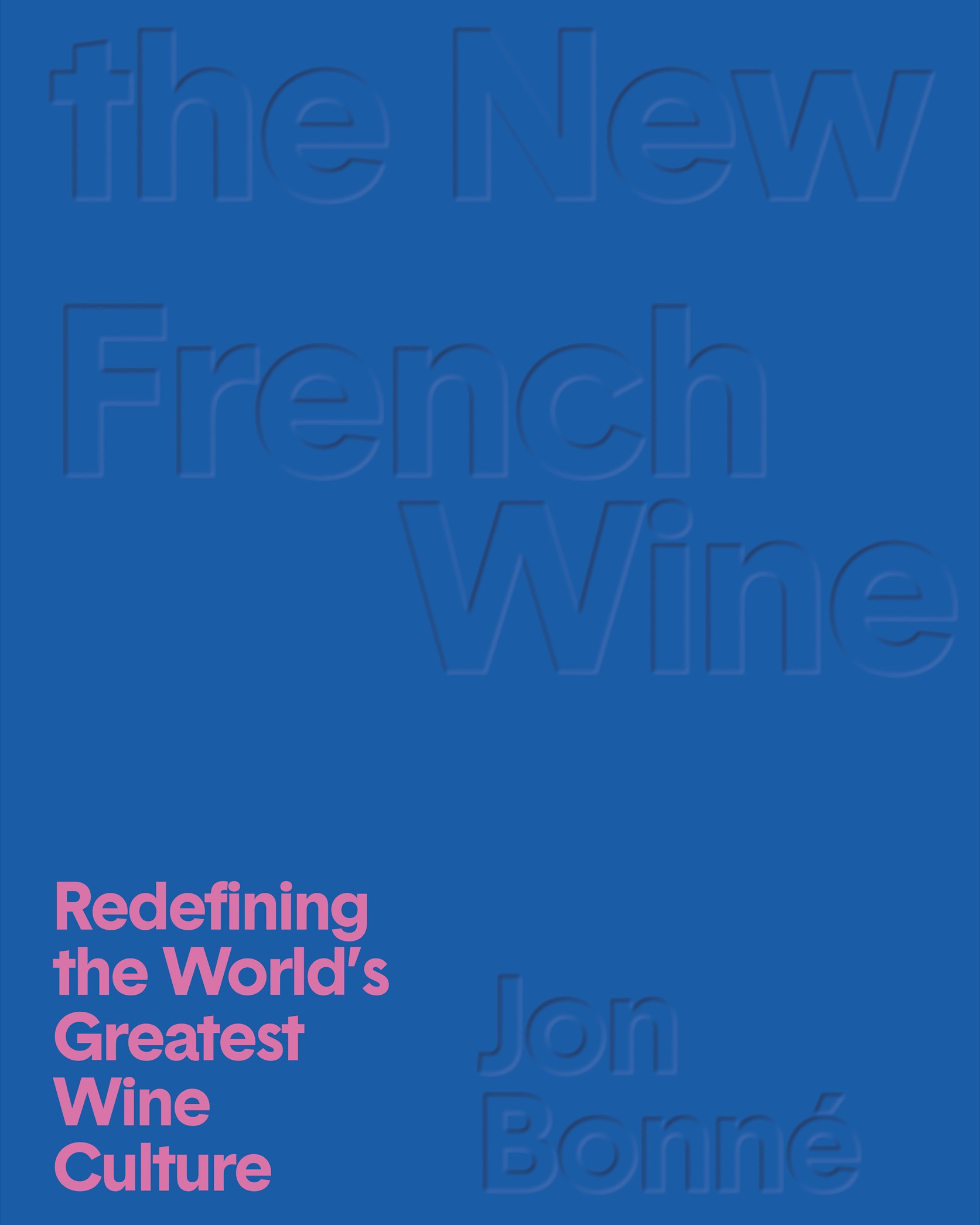Contents
Landmarks
Acknowledgments
A village? This book took a metropolis to come to life. So, thanks are due to a lot of people. Foremost, lets start with my wife, Valerie, who wasnt even my wife yet when this began in 2014. Indeed, this project allowed me to move back east, to move on from my prior work, and to launch a grand crazy adventure. Val, this could not have happened without your love and support.
To Katherine Cowles, my dear friend and literary agent: You not only brought this project into existence, but have spent years, literally, helping to manage the thousand pieces, ensuring it stayed on track, and fighting to make sure it got done right. Kitty, I remain in awe of your dedication.
To Susannah Ireland, our extraordinary photographer: We knew we wanted someone who would bring a fresh eye to the world of wine, and you did not just that but so much more. Your extraordinary talent and determination were essential in bringing this book to life. And youve captured so many important people and places in this tale in a gorgeous, humane way.
To Francesco Bongiorni, our remarkable illustrator. You made a reality the maps that we always knew had to hit different, and so perfectly captured our bonkers idea of paying postmodern homage to Roger Broders and the other artists whose work defined the classic French myth. It has been an honor.
To the entire team at Ten Speed Press and Penguin Random House, for committing to such an audacious project, and putting in extraordinary resources to make it come to life. This includes: Aaron Wehner, who always has believed in the importance of wine books, and mine in particular; Emily Timberlake, who persuaded me to take on this project and had faith in its unwieldy scope; Kelly Snowden and Lorena Jones, who brought it across the finish line, in its endless complexities; as well as Kelly Booth, Ann Spradlin, Nicole Sarry, David Hawk, Doug Ogan, Sohayla Farman, Mari Gill, Faith Hague, Allison Renzulli, and many others. I want to add a special thanks to Lizzie Allen, our wonderful book designer, who invoked her talents to make this book truly (and literally) shine.
To our outside editor and my longtime friend, Megan Krigbaum. Megan, your keen eye for detail and your deep wine knowledge helped profoundly to shape this book. And to Mi Ae Lipe, our valiant and precise copy editor, who took my wobbly prose and made it airtight, and caught the million things I would have missed. I remain agog at your style guide, Mi Ae!
To the many editors who helped me refine the ideas and themes in this book in their pages. That begins foremost with Talia Baiocchi, who made PUNCH my writing home for many years, and who challenged me to keep honing my theses at every turn. (T, I owe you some Chartreuse.) Huge thanks also to Dan Keeling, Rachel King, Tara Q. Thomas, and Joe Yonan, who similarly helped me pressure-test so many notions and details.
To the hundreds of vignerons across France who shared their time, their thoughts, their wine, often their tables, and on a couple of occasions their homes, with this random American: Je vous prie daccepter mes plus sincres remerciements. Your hospitality and kindness leave me speechless. Thanks as well to many of your overseas agents, who helped me to fill in details and to taste wines that I wasnt able to try in situ.
To my many outside pro readers, who helped hone my perspective, and who kept me honest both in storytelling and in technical detail. This includes David Chapel and Michele Smith; Guilhaume Gerard; Tomoko Kuriyama; Jean-Baptiste Lcaillon; Ted Lemon; Carrie Marchal; Carole Meredith; Andrew and Emma Nielsen; Tegan Passalacqua; Dan Petroski; Chris Santini; and Jeremy and Diana Snowden Seysses. Extra special thanks are due to Brenna Quigley, who reviewed the various passages on geology, and brought her deep knowledge of the subject to help them be both precise and lucid. Also to Becky Wasserman and her family, who provided exceptional insights on Burgundy, and helped to make that chapter come to life.
To the French governmentodd, I know, given some of my sentiments. But deep gratitude is owed to three particular institutions: BRGM, the French geological survey, whose extraordinary maps and data I spent countless hours poring over; INSEE, the statistics bureau, whose meticulous data allowed me to grasp a deeper picture of life in France past and present; and the Bibliothque Nationale de France, the national library, whose archives have made public an astonishing number of historic wine texts. I could not have reported this book without these resources.
Finally, the deepest thanks to my father, Jack, who was gone long before this project was even conceived, but not before imbuing me with a love and obsession not only with wine but all things French, and who provided an early and invaluable education on the subject. Those fond memories kept me focused on more than a few existential nights during my travelsthe thought of how this book would have given you such deep pride. Dad, your spirit infuses every single page.
About the Author and Contributors
Jon Bonn is one of the leading American voices on wine and food. He covers dining, restaurants, and wine across the country and around the globe, including for Resy and American Express. Previously he spent nearly a decade as the wine editor and chief wine critic of the San Francisco Chronicle, where he co-edited its award-winning Food & Wine section. He also has served as the lifestyle editor and wine columnist for MSNBC, the U.S. columnist for Decanter magazine, and the wine consultant for JetBlue Airways.
Bonn has written for such top publications as Food & Wine, the Washington Post, Saveur, PUNCH, Noble Rot, The Art of Eating, and Fortune. He is the author of The New California Wine (2013), which the Washington Post called mandatory reading for all fans of American wine, as well as The New Wine Rules (2017), which was published in six international editions. His work in food and wine journalism has received numerous accolades: He is a three-time winner of the prestigious Roederer Award for wine writingthe most ever won by an Americanand has been recognized by the James Beard Foundation nearly a dozen times.
He lives in New York City and Paris with his wife, Valerie.
Susannah Ireland is a photojournalist based in London. Her work and imagery have appeared in the Wall Street Journal, NPR, and Der Spiegel.
Francesco Bongiorni is an artist and illustrator who splits his time between Milan and Madrid. His work has appeared in the New York Times, Washington Post, and Le Monde.
Epilogue: Campouriez
Theres no obvious route to Campouriez, far up in the southwestern hills of the Massif Central, although what becomes clear is that, in the Aveyron department, theres simply no obvious route to anywhere. In a straight line, it wouldnt be too far a trip from Toulouse. But there are no straight lines. The Aveyron, less in the center of France than just north of south, has almost no autoroutesthe A75 barely grazes its eastern edge near the Hrault, crossing the massive Viaduc de Millau, one of the worlds tallest bridges. No shortcuts. Just quiet roads that grow ever more vacant as you push farther into the mountains. When we talk about la France profonde, at its root its this largely deserted heart of the country: departments such as Cantal, Corrze, and Creuse to the north; Lozre to the east; and Aveyron itself. Once it was, and sometimes still isnever sentimentallyreferred to as la diagonale vide

![Jon Bonné The New French Wine [Two-Book Boxed Set]: Redefining the Worlds Greatest Wine Culture](/uploads/posts/book/443558/thumbs/jon-bonn-the-new-french-wine-two-book-boxed.jpg)
